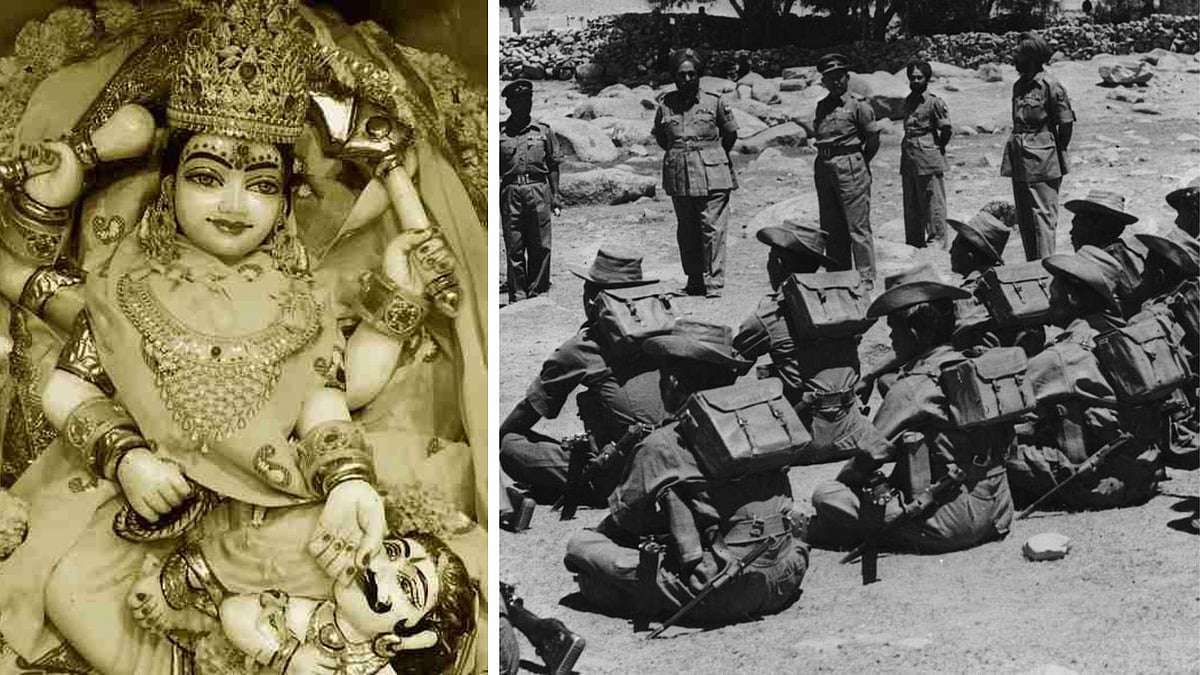Navratri 2025 Day-2: PM Jawaharlal Nehru Ordered 51-Kund Yajna At Datia’s Pitambara Peeth During 1962 War Against China…And It Worked!

**Datia (Madhya Pradesh): The Spiritual Significance of Pitambara Peeth**
Datia, located in Madhya Pradesh, is renowned for the famous Pitambara Peeth, a revered temple dedicated to Maa Baglamukhi, also known as Pitambara. Worshipped as the goddess of power, protection, and victory over enemies, Maa Baglamukhi holds a special place in the hearts of devotees.
### Historical Significance: The 1962 India-China War Connection
During the India-China war of 1962, it is said that then-Prime Minister Jawaharlal Nehru requested a 51-kund yajna (fire ritual) to be performed at Pitambara Peeth. This sacred ritual was intended to invoke divine blessings for peace and victory. Remarkably, the war concluded when China declared a ceasefire on November 20, 1962, subsequently withdrawing its troops to the positions held before the conflict along the Line of Actual Control (LAC).
This episode has since become a significant part of the temple’s history, drawing thousands of devotees who seek Maa Baglamukhi’s blessings for strength, protection, and victory in their own lives.
### Mystical Beliefs Surrounding Pitambara Peeth
Pitambara Peeth is not merely a temple; it is enveloped in legends and mystical beliefs that continue to fascinate visitors. Here are some unique features and beliefs associated with this sacred site:
– **Goddess of Power:** The principal deity, Maa Baglamukhi (Maa Pitambara), is believed to have the power to halt evil forces and safeguard her followers from enemies.
– **Darshan Through a Window:** Unlike traditional temples where devotees enter through grand gates, here the goddess is viewed through a small window, lending a unique and intimate darshan experience.
– **Changing Forms:** Many devotees report perceiving changes in Maa Baglamukhi’s form and aura at different times of the day — morning, noon, and evening.
– **The Color Yellow:** “Pitambara” translates to yellow-clad, and this color holds special significance within the temple. Devotees commonly wear yellow, offer yellow-colored food, and present yellow flowers to honor the goddess.
– **Temple of Power Seekers:** People from all walks of life, including politicians and leaders, visit the Peeth to seek blessings for victory, strength, and success. Special prayers by leaders are a common practice here.
### Ancient Shiva Temple Within the Complex
In addition to the shrine of Maa Pitambara, the temple complex houses an ancient Shiva temple dating back to the Mahabharata era. This historic temple adds to the spiritual ambiance and rich heritage of the site, making the Peeth a place of comprehensive worship and cultural significance.
### Devotional Beliefs and Temple Shrines
Maa Pitambara is one of the ten Mahavidyas in Hindu tradition, commonly depicted wearing bright yellow attire, symbolizing courage and energy. The temple complex also includes shrines dedicated to other deities such as Dhumavati, Kal Bhairav, Lord Hanuman, and Parashuram.
Nearby, the historic Vankhandeshwar Shiva Temple further enhances the spiritual importance of the region.
### Continuing Legacy
Pitambara Peeth continues to be a major pilgrimage site, attracting devotees from across Madhya Pradesh and beyond. Visitors come to offer prayers, perform various rituals, and seek the blessings of Maa Pitambara for protection, courage, and success in their lives.
The temple’s rich history, mystical aura, and powerful divine presence ensure that it remains a beacon of faith and devotion for generations to come.
https://www.freepressjournal.in/bhopal/navratri-2025-day-2-pm-jawaharlal-nehru-ordered-51-kund-yajna-at-datias-pitambara-peeth-during-1962-war-against-chinaand-it-worked









